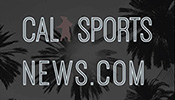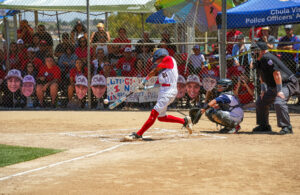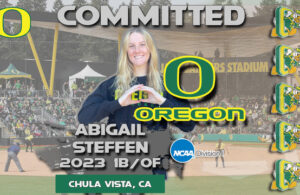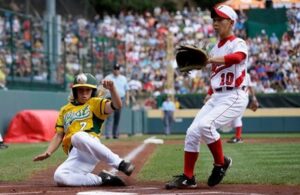Ex-NHLer John Blue Shares His Journey from the Crease to the Church
- Updated: November 9, 2020
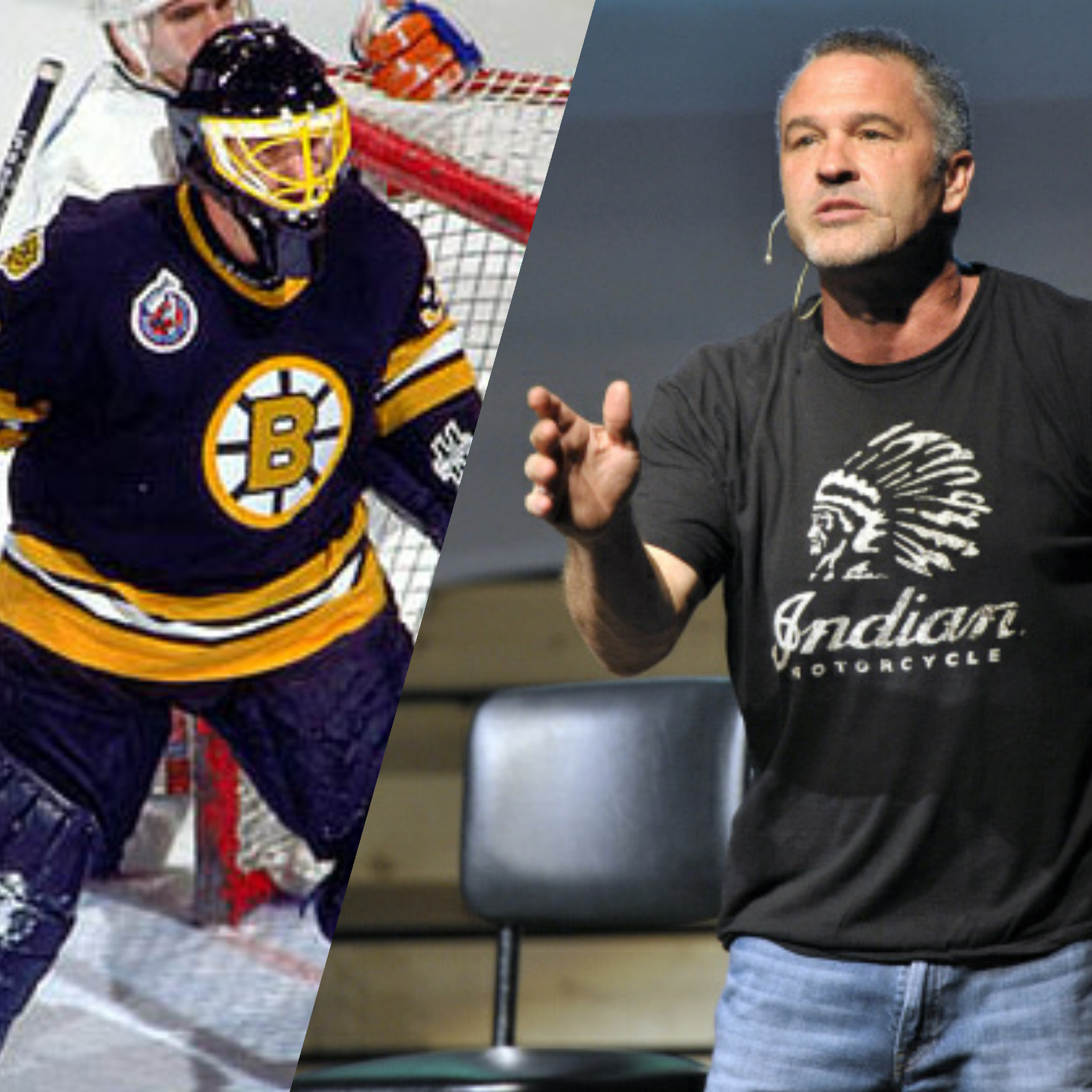
(Photo credit: Left/HHOF Legends of Hockey; Right/John Blue)
While it may be more commonplace today, Californian-born NHLers were very hard to come by in the early- to mid-90’s. That was especially the case for goaltenders. As a matter of fact, prior to the 1992-93 season, the NHL had no goaltenders from the Golden State.
Following the retirement of Reggie Lemelin in late 1992, the Boston Bruins were in need of a netminder. So, they called their AHL affiliate in Providence for the services of Huntington Beach native John Blue.
Playing parts of three seasons in the NHL, including a stint with the Buffalo Sabres, Blue would nonetheless make history as the first Californian-born goaltender in NHL history.
I recently had the privilege of speaking with John Blue, who shared many stories with me, including how he honed his skills as a netminder at the University of Minnesota, home to one of the most prestigious hockey programs in the United States, his aforementioned NHL career and his pious life after hockey.
Taking an Obscure Path in SoCal
For some California-born players, their interest in hockey piqued because perhaps their parents loved the sport growing up in Canada or the northern United States, for instance. This was not the case for a young John Blue, however.
Not only had there been no prior hockey lineage in the family but Blue went as far as to admit that his father knew nothing of the sport. After a brief work meeting, though, the elder Blue became fascinated with hockey, immediately passing the interest onto his young son.
“I was five when I actually started playing,” Blue remembered. “My dad was born and raised in California and knew nothing about hockey. He was in sales, so he went into a sales manager’s office one day and saw a picture of his kid in a hockey uniform and started asking him about it. He thought it looked interesting and thought, ‘Let’s give it a shot,’ and he threw me in when I was little.”
At such a young age, though, John Blue had the benefit of not taking his new hobby too seriously. Instead, the future NHLer, like any five-year-old, just wanted to have some fun and enjoy himself on the ice.
“When you’re five, you’re just doing whatever sports you can and if I remember correctly, we went to the rink and I crashed [into the boards], obviously never skating before,” an amused Blue reflected. “I got a helmet, then I crashed again, then I bought gloves and just kept adding to it until I finally had a uniform and they said, ‘Well, may as well sign you up and get you playing,’”
Blue eventually got the hang of skating. By the time he did, though, the love and passion for hockey he had acquired was more than enough to keep the youngster going.
“What really kept me going was just the love of the game,” Blue continued. “It’s just such a wonderful game. I often having strong conversations with my buddies that were pro-football players and talking about how [hockey] takes so many different skills: skating, stickhandling, speed; what helps make hockey the most skilled and difficult game to play of the major sports.”
With all due respect to football, Blue certainly made a very valid point.
“But, they’re big, fat linemen, so all they have to do is stand there and block,” Blue added, laughing.
The Golden Gopher
When teenage hockey players embark on their junior or collegiate careers, they take an enormous step personally. Many of these teenagers move away from home for the first time, which is a transitional period for aspiring players and their families to say the least. This was no exception for Blue.
For the future Bruins netminder, though, the move was more of a drastic one, leaving the warm, sunny climate of southern California for cold and snowy midwest. Since scouting California was rare, if existent, in the early- to mid-1980’s, it gave Blue extra incentive to get noticed, even if that meant replacing the shorts and sandals with the parka.
“I left home at 17, my senior year of high school,” the former netminder recalled. “At that time, no one was getting scholarships or even be seen in California playing hockey. I had to get out, so I went to play in the USHL my senior year of high school. I loved football, was captain of the football team and I maybe played Division II, but I packed it all up one night and left to go play in Des Moines, Iowa, and from there, ending up getting a scholarship from the University of Minnesota.”
As for the prestige of the University of Minnesota, made famous by the legendary coach, Herb Brooks, Blue admitted that it took some time to understand just how important to the school’s hockey program really was.
“I don’t think I really understood what it meant to play at the University until I got recruited,” the 54-year-old noted. “Especially as a kid from California, this is one of the preeminent college hockey programs in the country. So going there, some of the things I learned was a greater respect for them and understanding the history of the game, what it was all about. The University of Minnesota was the first time in 13 years that I ever had a coach.”
Not literally.
“Now, I say that tongue-and-cheek,” continued Blue. “I’ve had coaches but I had baseball and football coaches that coached hockey, so I never had someone who understood the game and was able to work with me which, I think, was one of the reasons it was more difficult for me. You take 13 years of learning of a certain way and then you try to change things, it’s very difficult.”
Blue even recalled the honour of representing the United States on the Olympic stage.
Playing for Team USA at the 1988 Winter Games in Calgary, Blue shared the goaltending duties with a future NHL all-star, but one who, unlike Blue, grew up in more of a hockey-friendly environment.
“I played on the Olympic team with Mike Richter, one of the great goalies of all-time,” Blue said. “He grew in New York and had great coaching and was just so fundamentally sound and a great athlete. So, [in California], the coaches had tried to change and move things around and there are just some things you can’t. So, I had to rely more on my athleticism and less being technically strong. But, when I got to Minnesota, I was able to change a few things and get more technically strong as a goaltender.”
During his three-year stint with the Golden Gophers, Blue played with many future NHLers including Paul Broten, Tom Chorske and future Los Angeles Kings Corey Millen and Robb Stauber. Along the way, though, Blue enjoyed the ride, helping the Gophers achieve plenty of success.
“The University of Minnesota is just a fantastic program,” the former netminder beamed. “We were in the [Frozen] Four two of the three years I was there and it’s where you learn to become a man. You’re in college, you’re playing the sport and you’re balancing school and it’s all these dreams you have as a kid of playing at a level that is amazing. Then, playing in the [Frozen] Four, we never won it but we had great teams. Tertiarily, we had several great friends; men that I’ve met and played with that I’m still friends with today. So, it was just a great experience.
“I have few regrets in my hockey career but the one regret I had was that I didn’t play my senior year at Minnesota. You just don’t realize how great college hockey was. I left to play on the Olympic team, went back but couldn’t play my senior year after the Olympics, then all of my buddies started getting signed, I was traded to the [Minnesota] North Stars [from the Winnipeg Jets] and signed with them, but nothing better than college hockey.
Getting to the Big Show
While he was drafted by the Winnipeg Jets in 1986, John Blue would never play for the organization. Instead, Blue would spend years playing in the ECHL, AHL and the now-defunct IHL before getting his shot at the NHL.
Called up by the Boston Bruins during the 1992-93 season, Blue would play backup to all-star goaltender Andy Moog, who had won three Stanley Cups in the 80’s with the Edmonton Oilers. Even more, Blue would join a team with three future Hall-of-Famers in Ray Bourque, Cam Neely and Adam Oates. So, to suggest that the Huntington Beach native learned a lot with the Bruins would be quite the understatement.
“What I learned there– gosh, so much good stuff,” Blue began to reflect. “I spent 20 years trying to get somewhere and at 25, I got there, to the Boston Bruins, albeit nothing close to an all-star career. It was an average career but I loved every minute of it. When you look at a guy like Ray Bourque, who is one of the greatest defensemen of all-time, and playing with him– Ray didn’t say a lot but he led. He got on the ice and just led. Cam [Neely] was a little more vocal but Cam, along with Adam Oates and Andy Moog, led by how they played the game. It’s a different game now but back then, there was no social media and these men, you would never hear them or see them say something controversial in the paper, you’d never see something controversial in their lives. They were strong leaders that hated to lose and loved to win.”
Blue, however, learned pretty quickly how much more competitive the NHL was, and the Bruins were prime examples of this.
“So, when I first got [to Boston], I was shocked,” the former Golden Gopher noted. “I remember being called up and my first practice, I remember Ray Bourque coming across the blueline and taking a snapshot that went right over my left shoulder, and just thinking, ‘What the hell just happened?’ I mean, it was such a quick release and such a heavy and hard shot within seconds. I’m playing in Providence, Triple A, which is great hockey, but [the NHL] is that much greater. Our practice rink [in Boston] was as cold as could be and I just remember Cam coming down, tee it up and it would hit you in the toe and you just wanted to cry because it was such a heavy, hard shot.
“But, I loved every minute of it. [Then-Bruins head coach Brian] Sutter was, in my opinion, just a fantastic coach. I loved playing for him. You knew where you stood with Brian Sutter. He would lose his mind, tear up the locker room with the best of them, but an honest coach that treated you as you played.”
After 41 games for the Bruins, Blue would move onto Buffalo as the Sabres signed the netminder in 1995 to fill in for a couple of injured goaltenders.
“Coming over to Buffalo, stepping in to plug a hole behind, in my opinion, the greatest goalie, at least in our era, in Dominik Hasek,” Blue began. “It was in December when I signed with them because [Andrei] Trefilov had gotten hurt and Dominik had gotten hurt and [John Muckler] was the GM and after playing a game in Rochester that night and called me up right after. So, I walked into Mucks’ office the next day and his speech was basically, ‘Look, I didn’t sign you to win any games but I sure as hell don’t want you to lose any games. You’re not Dominik Hasek. Don’t try to be. Just stop the puck,’ and I said, Okay,’ It was a great speech.”
Blue would play just five games with the Sabres, ultimately retiring from hockey in 1997.
A Higher Power
In the days since his hockey career, Blue has found his second calling his life in the form of a higher power.
Since returning to southern California, John Blue has become a pastor, helping so many through God and through prayer.
I asked Blue what his life in hockey has taught him in his new career.
“I always joke that hockey was the best preparation for pastoring,” Blue began. “In hockey, there’s a lot of cussing and fighting and when you become a pastor, you realize that a lot of people want to fight with you and I end up cussing too much.”
Blue continued, associating his lifelong desire of perseverance to his success today.
“In all seriousness, it was great preparation,” the Huntington Beach native said. “My hockey career is where I learned how to never quit. I had opportunity after opportunity. General managers from Bobby Clarke to Mike Milbury tried to bury me and told me that I could never play at [the NHL] level and I just didn’t quit. One of the great quotes, and I forget who said it, but half the battle is just showing up, and I refused not to show up. I refused to let anyone work harder than me and I refused not to let anyone show up.
“So, how it translates into the ministry is that I planted five or six churches and there are so many times that you would see an opportunity to quit and can’t, meaning this: When I planted my last church, the first day, 17 people show up, and many said that I should quit, that that’s not a church, that’s a bible study. But, when you know what you’re called to do, and I really, truly believe that God called me to be a hockey player and, in this stage of life, a pastor to really help people, to walk with people, to give people hope and that hope is in Jesus Christ.”
As for the church of 17 people, it also felt the effect of Blue’s unwavering perseverance.
“We took that last church a couple years ago from 17 to, before COVID, 80 or 90,” beamed Blue. “We have a number of men and women who deal with substance abuse that have been saved and have the hope of Jesus Christ and have been baptized. So, I just see these great things in people’s lives and see them changed. From that, you get the same excitement and satisfaction when you play hockey and win a game, and even more so now when I see someone now have hope in their life.
I love what I do as a pastor. I love planting churches and I love working with and helping people. It’s been a great opportunity and I think hockey is what laid the foundation to prepare me for this next part of my life, which is actually more important and will be longer than my career in hockey.”
Unusual Times
COVID-19 has had an effect on all of us, and John Blue and his family are no exception to this. Regardless, the former NHLer and his family are in high spirits as they continue life during the pandemic.
“As far as COVID has been, we’ve been good,” Blue assured me. “I’ve got eight people living in my house. I’ve got five kids and one grandbaby. We’ve been pretty active, though. I’ve got one son, who is a professional surfer and he’s been pretty active traveling and surfing. I just took my one son, a hockey player, back east to Mount St. Charles Prep School and is a really good player there. He’s a forward, begged me to play goalie but I refused to let him, so now he plays forward and loves it. I have a daughter in nursing school, one in elementary school and then I have my grandbaby and a fantastic wife. I am very blessed. God has blessed me with a great family and a wonderful life, so we fared pretty well through this and like everyone else, ready to get to the other side of it and see what’s next.”
As a child who collected hockey cards, I grew up during a time when American-born NHLers were more of a rarity. Seeing the MA, MN and MI on the back of those cards under “Birthplace” was something you didn’t see too often. I even remember, at one point, asking my parents what “WI” and “IL” stood for. With that in mind, you can imagine the shock of yours truly looking at the back of a John Blue hockey card to see “CA” and even “Beach” listed as a birthplace. But, only recently did I reflect on John Blue’s career when San Diego native Thatcher Demko made news in this summer’s — yes, summer’s — Stanley Cup playoffs, standing tall in goal to help the Vancouver Canucks come so close to pulling off a monumental upset.
I had reached out to Mr. Blue about Demko’s performance, but we continued our conversation. After all, I couldn’t help but wonder about his own career and life, how his interest in hockey first piqued and the unique road that took him to the NHL and beyond.
At 54 years young, it was clear that John Blue wouldn’t have changed his path to hockey and religion for anything in the world.
A man who was willing to be a student on those frigid days in the midwest to the cold nights at the rink in New England before heading back home to help spread the word of the Lord, John Blue has seen and experienced a lifetime of lessons that have made his life, and his memories, richer.
He wasn’t an all-star netminder but he has no issues with that. As a matter of fact, John Blue was big enough to poke fun at himself for being “just an average” NHL netminder.
He may always be remembered as the first California-born goaltender in NHL history and he is proud of that. What instills more pride in the Huntington Beach native, though, is being a student-turned-teacher, who shares his journeys as a competitor, as a man of God and as a persevering human being.
This is what John Blue stands for: a man who knows that, through it all, he’s done all right.
